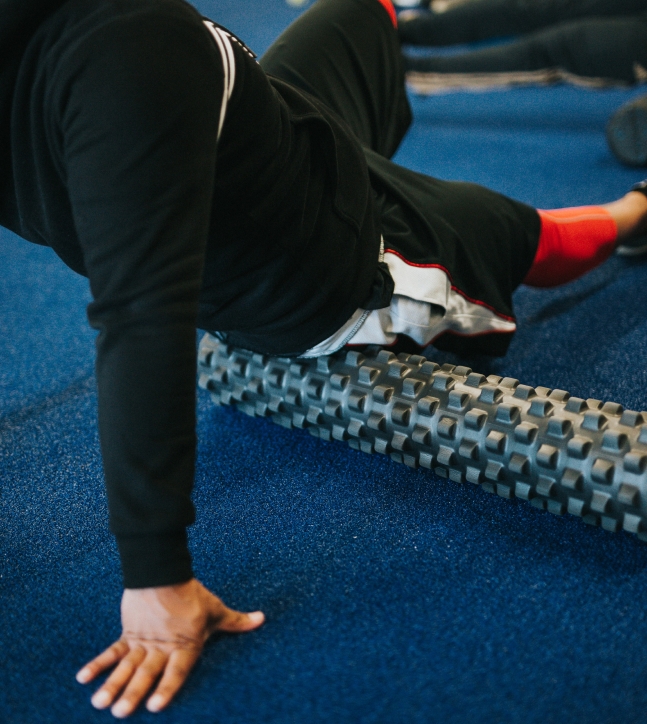Myofascial Release for Persistent Pain
In the hands of trained specialists, chiropractic treatments are highly effective for different muscle, nerve, and spine-related problems, including headaches, neck pain, and back pain.
One such treatment is myofascial release. Here at Integrate Institute, MN myofascial release therapy is one of our commonly recommended treatments for patients with back or muscle pain.
Our licensed and highly experienced chiropractors have helped patients of all ages dealing with persistent or chronic back and body pain. Our myofascial release therapy sessions have helped them release tension, have a better range of motion, and gain a higher quality of life.
To help ease your apprehension about scheduling a myofascial release in Burnsville, we made this primer to answer frequently asked questions about the procedure.
What is Myofascial Release?
Myofascial release is a physical or hands-on therapy technique used to help manage muscle pain and discomfort. It is primarily used to treat myofascial pain syndrome.
This therapy technique involves massaging, kneading, and stretching stiff or tight areas to relieve pain and promote a better range of motion. These tight areas are called trigger points and feel like knots, bumps, or nodules on our muscles.
Applying pressure to these trigger points helps the muscles and fascia to relax and release tension. An MN myofascial release therapy session can be an intense experience, especially if the patient’s muscle pain is severe.
Although patients may feel sore immediately after a myofascial release therapy session, their muscles will feel looser and their body easier to move after the soreness subsides.
Benefits of Myofascial Release
When done by a professional, myofascial release is effective in relieving deep, aching muscle pain. It also helps improve the body’s range of motion, particularly for patients with neck, shoulder, and lower back pain.
Like regular massage therapy, a myofascial release will also help our body release tension or stress and relax. The physical motions may also help improve blood circulation.
Areas That May Benefit from Myofascial Release
A myofascial release therapy session can be done on any area that may develop knots or trigger points. These are often the parts of the body that remain in a fixed position or are used for strenuous activities and motions.
Here are several parts of the body that can benefit from myofascial release:
- Entire back
- Lower back
- Neck and head
- Shoulders
- Arms
- Hips
- Quadriceps or thighs
- Calves and feet
What is Myofascial Pain Syndrome?
Myofascial pain syndrome is a common and debilitating pain disorder that affects our muscles and fascia, the thin, white connective soft tissues around our muscles. Almost 85% of people experience myofascial pain syndrome in their lifetime. People of all ages and genders may develop this disorder. Despite this, many cases of myofascial pain syndrome are misdiagnosed, underdiagnosed, or overlooked.
This condition can be caused by repetitively contracting our muscles. Jobs that require repetitive motions and heavy lifting or strenuous motions contribute to myofascial pain syndrome.
Patients often describe the pain as deep and aching or throbbing. Others have also noted that the condition causes tight, stiff, and vice-like muscle pain.
The symptoms of myofascial pain syndrome also include the following:
- Persistent or worsening muscle pain
- Trigger points or knots in the muscles
- Sore or tender muscles
- Limited range of motion, such as shoulder rotations or twisting the torso Additionally, myofascial pain syndrome can also cause other health issues due to extreme pain. Some common examples are headaches, difficulty sleeping, stress or anxiety, and fatigue.
What Is the Difference Between Myofascial Release and Massage?
A myofascial release may seem like any other massage when simply going by its written definition. However, the difference in techniques and aims is apparent when seen or experienced in practice.
A massage is a broad term for hands-on techniques aimed at relieving pain and tension by applying pressure by stroking and kneading parts of the body. Most massage techniques involve using oil and other lubricants for easier and smoother ministrations.
On the other hand, a myofascial release does not use any oil or lubricant. Moreover, the treatment requires sustained and targeted pressure. Stroking, kneading, and stretching motions are also used. However, they are concentrated on trigger points to help release tension and restriction.
Chiropractors and physical therapists generally maintain steady pressure on these specific points or tense knots in our myofascial tissues for three to five minutes. This allows the soft tissue fibers to soften and stretch.
Who Needs Myofascial Release?
We recommend anyone struggling to cope with myofascial pain syndrome to try myofascial release therapy. It is appropriate for people of all ages, including children and teenagers.
Pediatric myofascial release may help children with orthopedic problems, scoliosis, head trauma, and movement disorders. Myofascial release therapy sessions for younger, growing patients are less forceful and well-suited to help relieve growing pains.
Adults with extreme body pain, tight muscles, and chronic headaches may also benefit from this type of therapy. Myofascial release has a relative lack of risk. As such, many patients with long-term or persistent back and body pains may try it as a non-invasive approach to help avoid surgery.
Consult a Professional and Licensed Chiropractor
If you are experiencing chronic muscle pain, a MN myofascial release therapy session may help. It is always best to speak with a licensed chiropractor, physical therapist, or physician before scheduling a treatment session.
Contact us today to schedule a consultation or to book your appointment. Integrate Institute’s team of licensed chiropractors and experienced rehabilitation specialists will help you take the first step towards a pain-free daily life.
Be one step ahead, call us:
For more information, book an appointment with our specialists today.
(952) 300 - 1461








